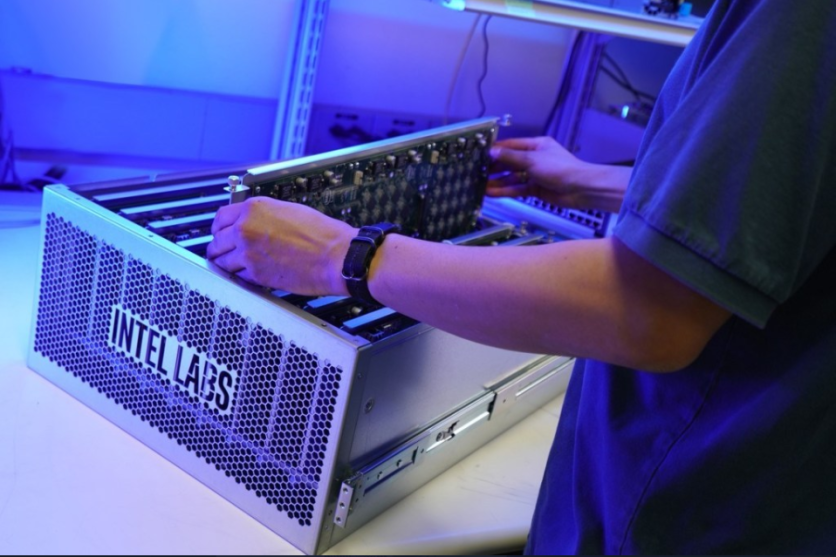Intel has upgraded its Pohoiki Springs system to accommodate 100 million neurons. The neuromorphic computing system integrates over 768 Loihi chips and has a five rack-unit that is apply called the Pohoiki Springs.

What is A Neuromorphic Chip?
The Loihi neuromorphic chip is developed by Intel for research applications way back in 2017. It is called neuromorphic because it mimics the human brain; the only difference is instead of impulses being sent to the brain; for the neuromorphic chip it sends electrical impulses called "spikes."
What Is It Used For Anyway?
Loihi's architecture uses extreme parallelism, several communications, and asynchronous signals, which aims to provide performance improvements like brain-inspired algorithms and, of course, dramatically reduce power levels.
Mike Davies, who is the director of Intel's Neuromorphic Computing Lab spoke and had this to say, "Neuromorphic computing is useful for a different regime, a different niche in computing than large data, supervised learning problems,"
Deep learning uses large amounts of data to train large networks with an enormous computational cost. Hence it needs vast I/O and memory bandwidth, which is also relatively slow in comparison to neuromorphic computing. Neuromorphic models are different but share the same purpose, however.
"They're processing individual data samples. The batch size one regime, we call it, where real world data is arriving to the chip and it needs to be processed right then and there with the lowest latency and the lowest power possible. ...What's different on the edge side compared to even edge deep learning AI chips is that we're also looking at models that adapt and can actually learn in real time based on those individual data samples that are arriving which the deep learning paradigm does not support very well."
Intel Finally Scaling Up!
Pohoiki Springs predecessor, the Kapoho Bay, only had about two Loihi chips with 262,000 neurons or spikes. Just about the same amount of neurons of a fruit fly, mind you. Kapoho Bay was intended for the development of algorithms for edge systems, successfully reading braille and being able to identify visual landmarks. It also consumes power as low as tens of milliwatts.
The new system, which is Pohoiki Springs, uses eight boards this time with over 96 Loihi chips. Spike-based signaling is being used between all of the chips, and the whole five rack setup consumes just about 300W, which is like a normal PC setup in comparison.
What Does This mean For The Future?
The use for commercial use seems to be something far off still. However, this could do wonders for helping deep learning AI process things faster as well as compute things that humans need right away. To give context, the human brain has about 86 billion neurons, and that is the equivalent of around 650,000 Loihi chips. So it's still safe to say that we are a long way to having a computer that is as quick as our human brains. The road is closing in, however, as technology is getting more advanced each day.
ⓒ 2025 TECHTIMES.com All rights reserved. Do not reproduce without permission.




